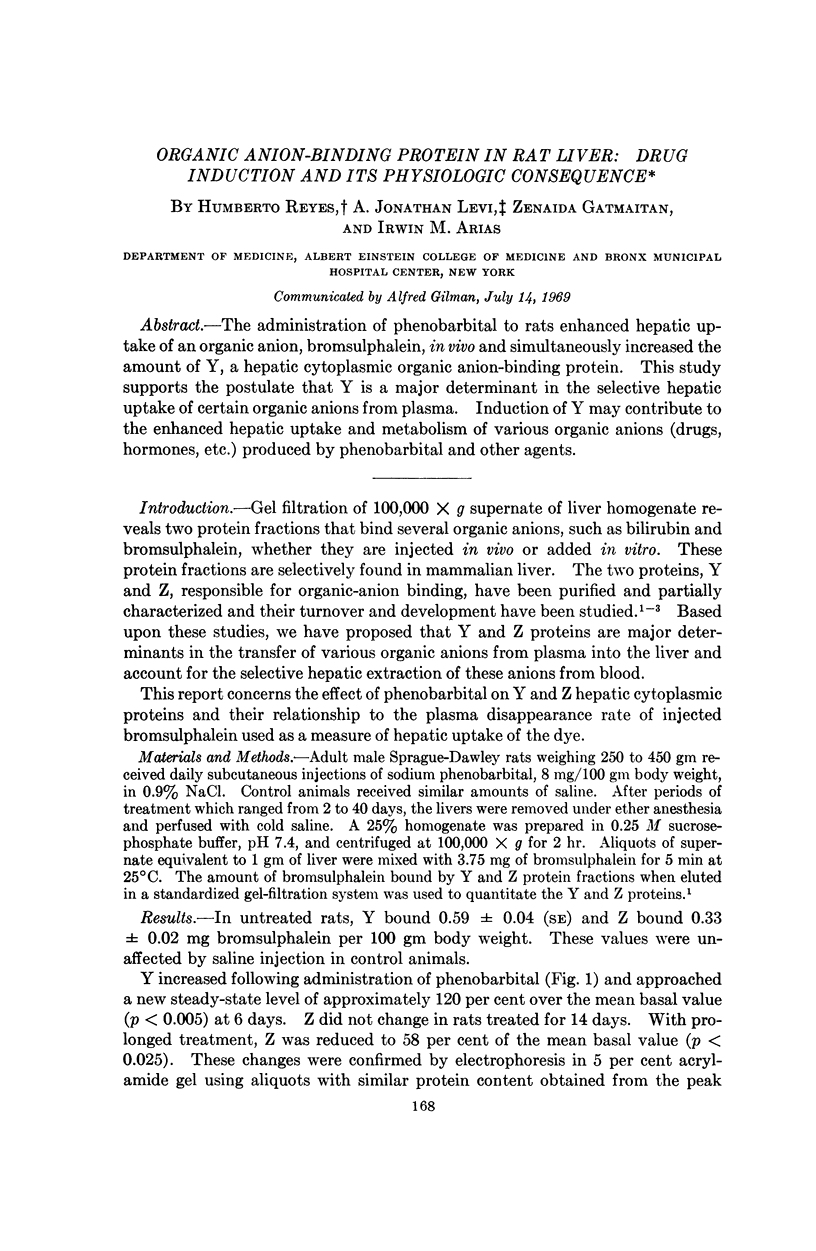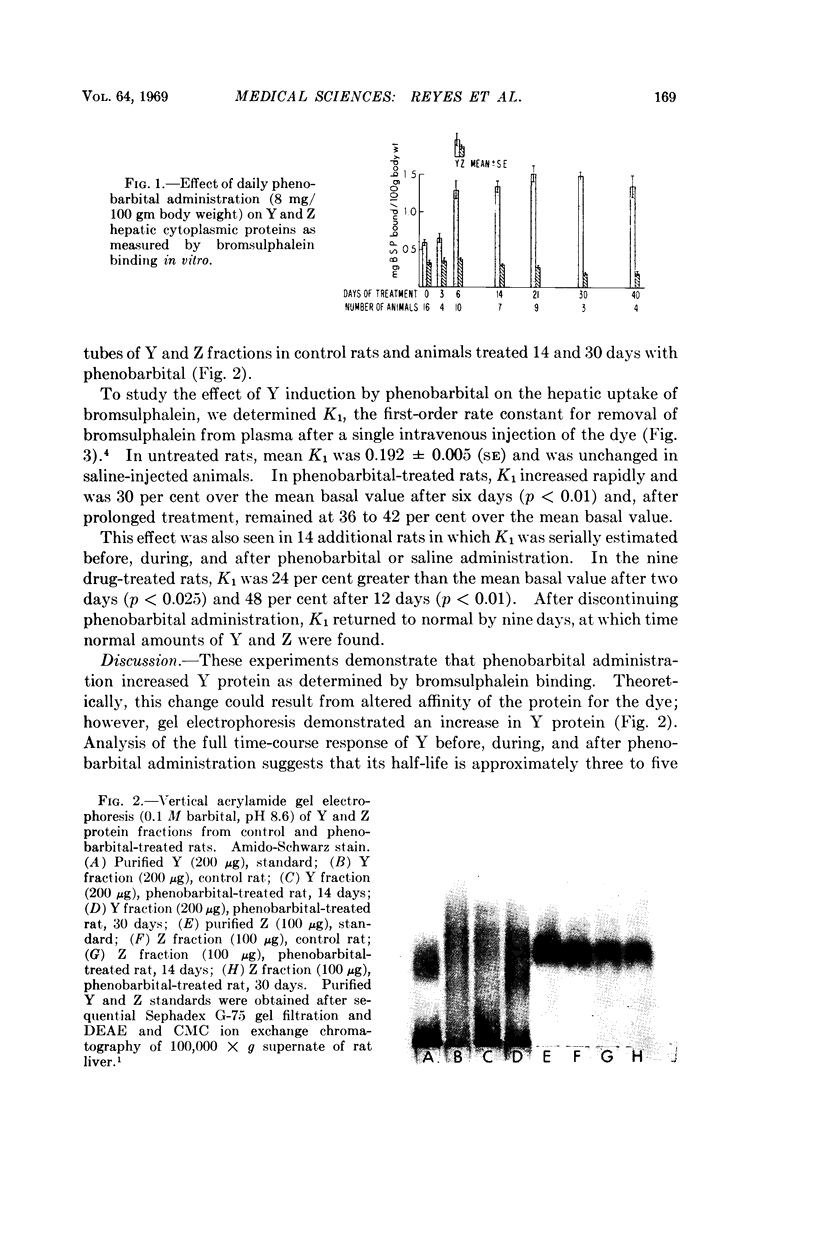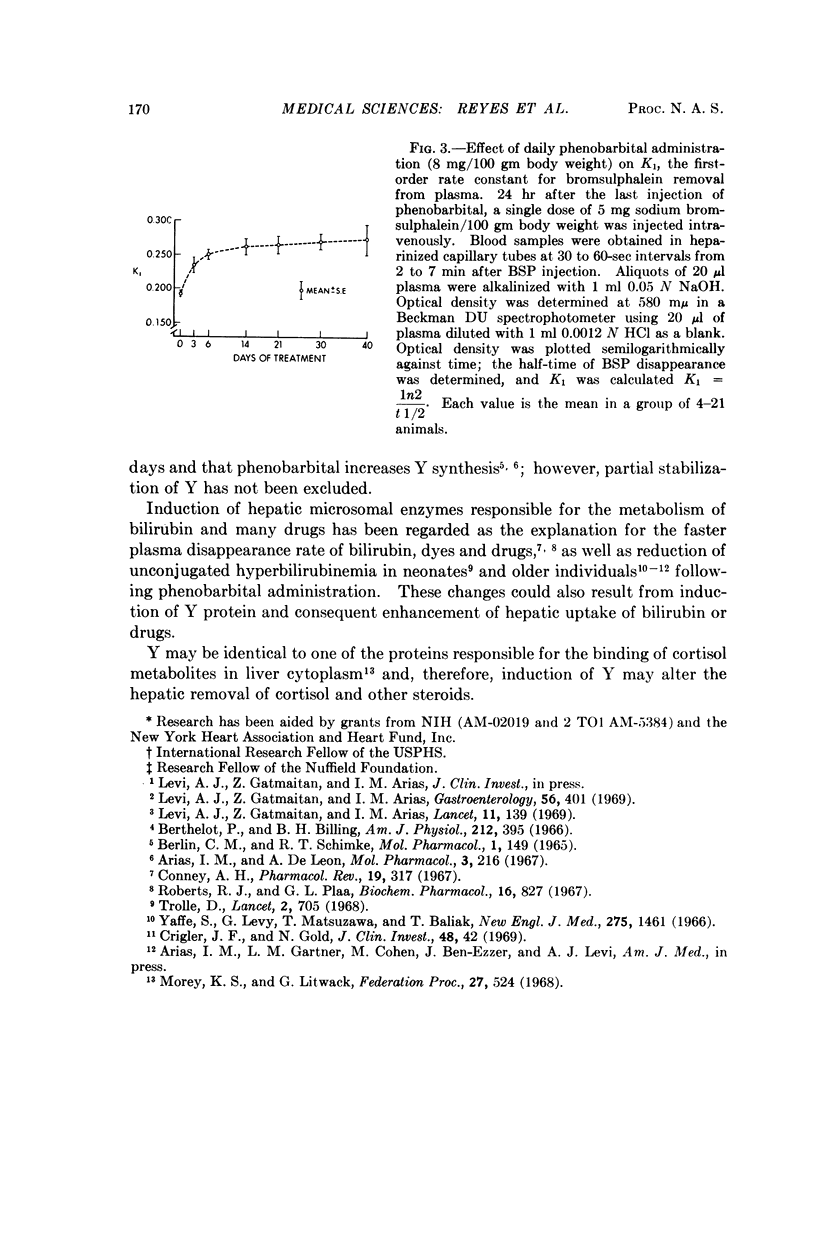Abstract
The administration of phenobarbital to rats enhanced hepatic uptake of an organic anion, bromsulphalein, in vivo and simultaneously increased the amount of Y, a hepatic cytoplasmic organic anion-binding protein. This study supports the postulate that Y is a major determinant in the selective hepatic uptake of certain organic anions from plasma. Induction of Y may contribute to the enhanced hepatic uptake and metabolism of various organic anions (drugs, hormones, etc.) produced by phenobarbital and other agents.
Full text
PDF


Images in this article
Selected References
These references are in PubMed. This may not be the complete list of references from this article.
- Arias I. M., De Leon A. Estimation of the turnover rate of barbiturate sidechain oxidation enzyme in rat liver. Mol Pharmacol. 1967 Mar;3(2):216–218. [PubMed] [Google Scholar]
- Berlin C. M., Schimke R. T. Influence of turnover rates on the responses of enzymes to cortisone. Mol Pharmacol. 1965 Sep;1(2):149–156. [PubMed] [Google Scholar]
- Berthelot P., Billing B. H. Effect of bunamiodyl on hepatic uptake of sulfobromophthalein in the rat. Am J Physiol. 1966 Aug;211(2):395–399. doi: 10.1152/ajplegacy.1966.211.2.395. [DOI] [PubMed] [Google Scholar]
- Conney A. H. Pharmacological implications of microsomal enzyme induction. Pharmacol Rev. 1967 Sep;19(3):317–366. [PubMed] [Google Scholar]
- Crigler J. F., Jr, Gold N. I. Effect of sodium phenobarbital on bilirubin metabolism in an infant with congenital, nonhemolytic, unconjugated hyperbilirubinemia, and kernicterus. J Clin Invest. 1969 Jan;48(1):42–55. doi: 10.1172/JCI105973. [DOI] [PMC free article] [PubMed] [Google Scholar]
- Levi A. J., Gatmaitan Z., Arias I. M. Deficiency of hepatic organic anion-binding protein as a possible cause of non-haemolytic unconjugated hyperbilirubinaemia in the newborn. Lancet. 1969 Jul 19;2(7612):139–140. doi: 10.1016/s0140-6736(69)92444-1. [DOI] [PubMed] [Google Scholar]
- Roberts R. J., Plaa G. L. Effect of phenobarbital on the excretion of an exogenous bilirubin load. Biochem Pharmacol. 1967 May;16(5):827–835. doi: 10.1016/0006-2952(67)90055-x. [DOI] [PubMed] [Google Scholar]
- Trolle D. Decrease of total serum-bilirubin concentration in newborn infants after phenobarbitone treatment. Lancet. 1968 Sep 28;2(7570):705–708. doi: 10.1016/s0140-6736(68)90750-2. [DOI] [PubMed] [Google Scholar]
- Yaffe S. J., Levy G., Matsuzawa T., Baliah T. Enhancement of glucuronide-conjugating capacity in a hyperbilirubinemic infant due to apparent enzyme induction by phenobarbital. N Engl J Med. 1966 Dec 29;275(26):1461–1466. doi: 10.1056/NEJM196612292752602. [DOI] [PubMed] [Google Scholar]




